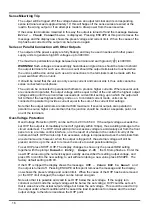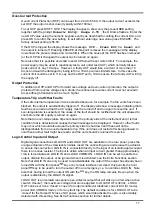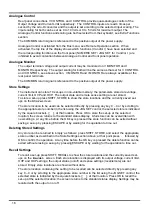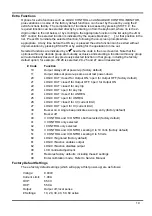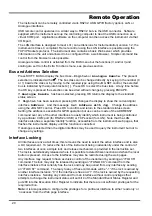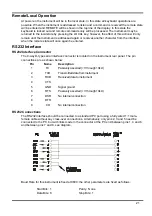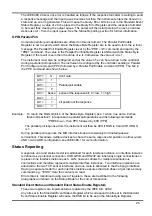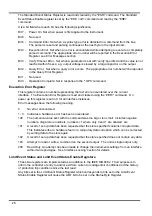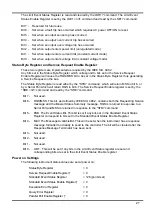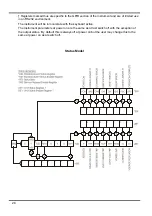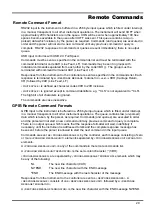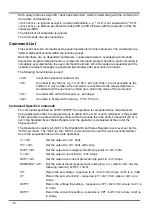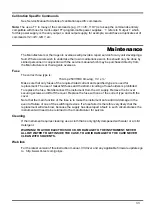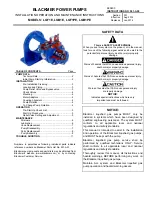
LAN Status Indication
The LAN Status is displayed in the top left hand corner of the display during normal operation. It
is not shown on all menus. There are 4 possible indications:
No LAN
If the unit cannot detect any connection to a LAN e.g. the cable is unplugged
then the LAN status indicator is
.
Configuring
The unit has detected a LAN connection but is not yet configured, e.g. is waiting
for DHCP. The LAN status indicator is animated flashing between
and
LAN OK
The LAN connection is now configured and the unit can communicate. The
display becomes
LAN FAULT
The unit has detected a problem with LAN connection, e.g. Its IP address is in use
by another device. Communication is not possible and the display shows
LAN Identify
The instrument's main web page has an 'Identify' function which allows the user to send an
identifying command to the instrument which causes its display to flash until the command is
cancelled.
Web Server; Configuration Password Protection
The unit contains a basic web server. This provides information on the instrument and allows it to
be configured. The Configure page can be password protected to deter unauthorised changes to
the remote operation configuration; the default configuration is ‘no password’.
The Configure page itself explains how to set the password. The password can be up to 15
characters long; note that the
User Name should be left blank
. The password will, however, be
reset to the default (no password) if the rear panel LAN RESET switch is used to reset all the LAN
parameters to their factory default.
The web pages also have an ‘Identify’ function which allows the user to send an identifying
command to the instrument which causes its display to flash until the command is cancelled.
ICMP Ping Server
The unit contains an ICMP server allowing the instrument to be ‘pinged’ via either its host name
or IP address.
VXI-11 Discovery Protocol
The instrument has very limited support of VXI-11 which is sufficient for the discovery protocol
and no more.
The instrument implements a Sun RPC Port-mapper on TCP port 111 and UDP port 111 as
defined in RPC1183. The calls supported are: NULL, GET PORT and DUMP.
On TCP port 1024 a very simple VXI-11 protocol is implemented sufficient only for instrument
discovery. This implements the following calls: CREATE LINK, DEVICE_WRITE, DEVICE_READ
and DESTROY_LINK.
Once a link has been created anything written to the device is ignored and any read from the
device returns the identification string as would be expected from a “*IDN?” of the form
‘Manufacturer,Model,Serial No.,X.xx – Y.yy’
for example
THURLBY THANDAR, QPX1200, 279730, 3.00 – 1.00
where ‘X.xx’ is the revision of the main firmware and ‘Y.yy’ is the revision of the interface
firmware. Interface firmware is user field updateable via the USB port.
23








